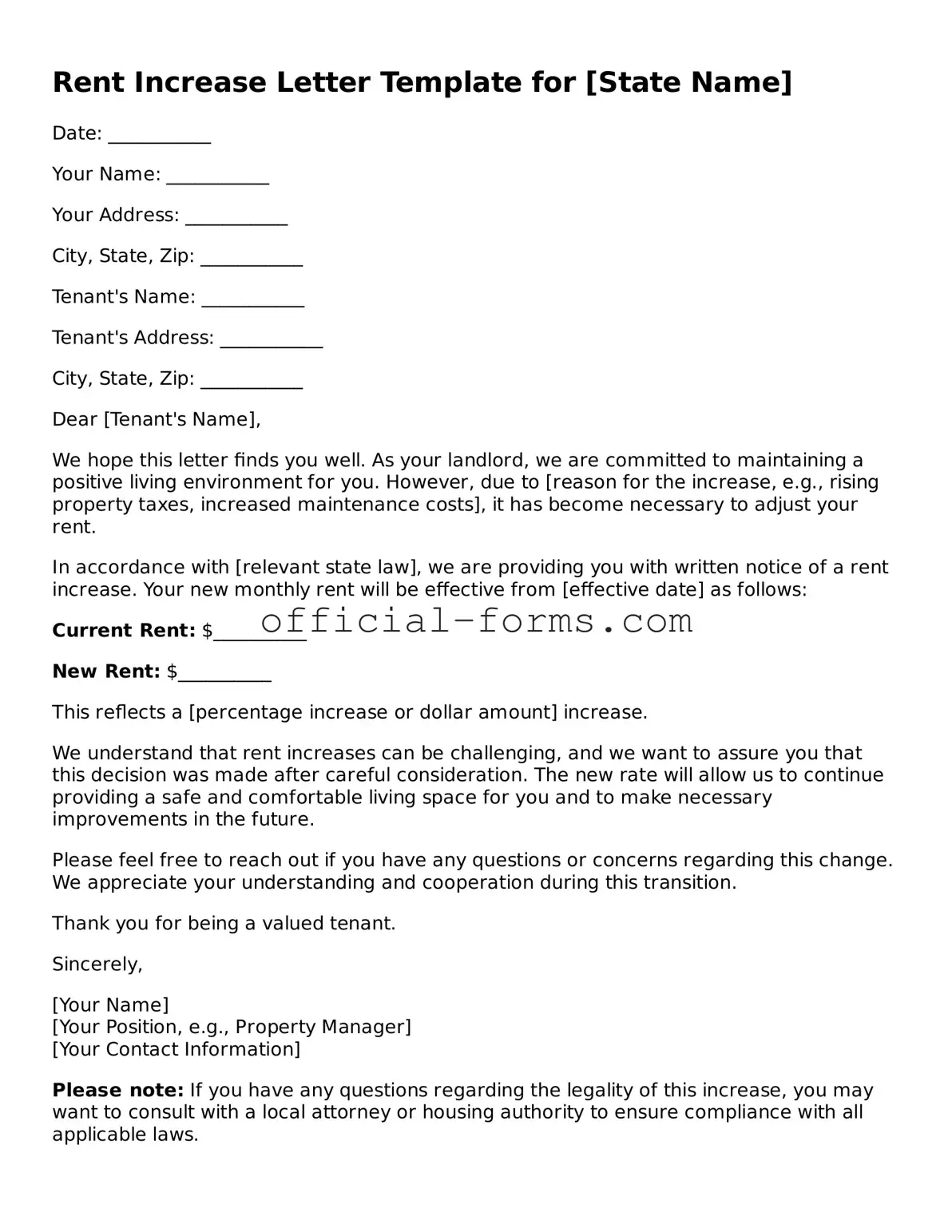When navigating the complexities of rental agreements, understanding the Rent Increase Letter form is essential for both landlords and tenants. This form serves as a formal notice from the landlord to the tenant, indicating a change in the rental amount due for the property. It typically includes critical details such as the effective date of the rent increase, the new rental amount, and any specific reasons for the adjustment, which may be required in some jurisdictions. Clarity is paramount; thus, the letter should be written in a straightforward manner to ensure that tenants fully comprehend the changes being proposed. Additionally, the form often outlines any rights the tenant may have in response to the increase, including timeframes for objections or negotiations. By providing all necessary information in a structured format, the Rent Increase Letter not only fosters transparency but also helps maintain a respectful landlord-tenant relationship. Understanding this form can empower both parties, facilitating a smoother transition during what can often be a sensitive discussion about financial obligations.
